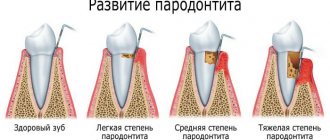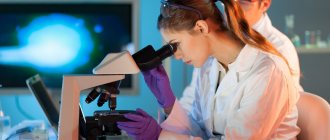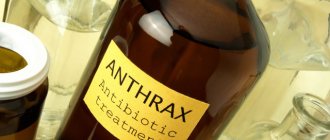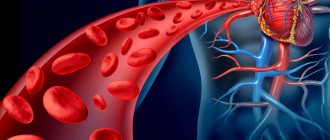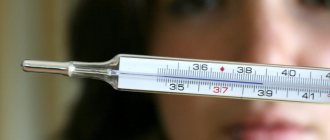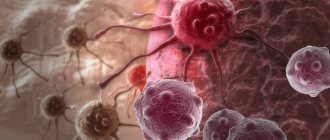What is lymphadenitis?
This is an inflammation (acute or chronic) that affects the lymph nodes and occurs due to the penetration of pathogens or their toxins into them.
Sometimes it develops autonomously, but always speaks of an abnormal process in a particular organ. Prolonged persistence of inflammation in the lymph nodes is fraught with a number of serious consequences, often dangerous to humans. Lymphadenitis is a very common condition and accompanies many infections.
The absence of lymphadenitis, which can now be found quite often, does not exclude the presence of a pathogen or its toxin in the body.
Normally, only slightly enlarged and painless lymph nodes located under the lower jaw can be felt; other nodes are not palpable. This condition occurs in more than 75% of the population.
Antibiotics for inflammation of the lymph nodes
According to medical observations, in 95% of cases, inflammation of the lymph nodes occurs due to the penetration of a bacterial infection into the body, most often staphylococci and streptococci. These bacteria most often cause inflammatory processes in the ENT organs and respiratory tract. Only antibiotics can cope with a bacterial infection.
In general, doctors prefer to use broad-spectrum antibiotics, which have a detrimental effect on several types of bacteria. Antimicrobial drugs stop the pathogenic growth of microorganisms, cause their death, and prevent further reproduction. Antibiotics of the following pharmacological groups have good effectiveness:
- Macrolides – Azithromycin, Sumamed, Macropen.
- Penicillins - Augmentin, Amoxil, Flemoxin.
- Cephalosporins – Emsef, Ceftriaxone.
Treatment with antimicrobial agents may take 7 to 14 days. In combination with antibiotics, the doctor will prescribe probiotics that will help protect the gastric mucosa from the development of dysbiosis: Linex, Lactovit, Enterozermina and others.
If the cause of inflammation of the lymph nodes is considered to be a viral infection, antibiotics are not prescribed. This will require taking antiviral drugs.
Briefly about the lymphatic system
The lymphatic system is represented by:
- spleen;
- lymphatic vessels and nodes;
- lymph.
It is a vascular network, performing several important tasks, for example:
- destruction of pathogens and their toxins;
- Helps with metabolism.
The spleen is the center of the lymphatic system, and in the fetus it also serves as the hematopoietic department. But after birth, this function is suppressed and the process of differentiation of lymphocytes, the leading guardians of the immune system, occurs in it. It is in the spleen that they acquire their specific functions. These cells are formed in the bone marrow, which is mainly located in the pelvic bones, ribs, sternum, and vertebrae. From there, they enter the general bloodstream in an immature form and finally develop, entering the spleen.
Lymphatic vessels are formed by the combination of smaller structures - lymphatic capillaries. The main function is the outflow of lymphatic fluid from the internal organs to the lymph nodes that correspond to a specific region. Vascular channels form larger structures - lymphatic ducts and trunks. From them the lymph flows into large veins, returning to the general bloodstream.
The most impressive are:
- the thoracic lymphatic duct, which collects lymph from the left half of the chest, peritoneum, pelvic organs and legs;
- right lymphatic duct - from the right upper limb, right chest, cervical and head area;
- left jugular trunk - from the left half of the cervical and head region;
- left subclavian trunk - from the left upper limb.
Lymph nodes look like small balls from 1 - 2 mm to 2 cm in diameter. They are located along the lymphatic vessels. The surface of the nodule is covered with a connective tissue capsule, under which a huge number of lymphocytes are concentrated. The main task is to prevent the generalization of abnormal processes.
They are a specific barrier to various infectious agents and are localized:
- in the cervical and head zone (submandibular, anterior cervical, occipital);
- in the arms and legs (elbows, axillae, popliteal and groin);
- in the chest;
- in the abdomen and peritoneum (iliac, mesenteric and pelvic).
Lymph is formed in many tissues of the body due to the movement of some liquid and protein part (about 10%) from the blood capillaries to the lymphatic ones. It also contains carbohydrates, fatty substances, various cellular and microelements.
The lymphatic system is the most important component of the body, without which it simply could not survive, since it is attacked daily by millions of harmful particles.
Types of lymphadenitis
First of all, they distinguish:
- acute lymphadenitis. Formed when highly pathogenic organisms enter the lymph nodes. It is characterized by intense and rapid inflammation in the lymph node, occurring against a background of malaise - severe weakness, migraine, fever. Without proper medical care, it is prone to developing into a purulent form;
- chronic lymphadenitis. It often becomes a consequence of an untreated acute process; the etiological factor is weakly virulent (non-aggressive) flora. Characteristic of syphilitic, tuberculosis lesions.
Depending on the pathogen:
- specific. This variety can be caused by: Mycobacterium tuberculosis, plague bacillus, tularemia bacteria, Treponema pallidum, Brucella, actinomycetes, gonococci, etc. I.e. pathology is formed against the background of specific diseases - with gonorrhea, syphilis, plague, tuberculosis, actinomycosis, tularemia, brucellosis;
- nonspecific. It is formed when a number of infectious and structurally different agents are introduced into the body, causing atypical forms of diseases. Among the pathogens may be present: bacteria - streptococcus, moraxella, staphylococcus, Haemophilus influenzae or Escherichia coli, Proteus; viruses - parainfluenza, influenza, respiratory syncytial virus, adenovirus, paramyxovirus, parvovirus; mushrooms - most often of the Candida genus.
By prevalence:
- single - inflammation of one lymph node;
- regional - one region;
- generalized - many lymph nodes of different areas are involved in inflammation.
Based on the nature of the inflammatory changes, the following are distinguished:
- purulent lymphadenitis - the node contains purulent masses that are caused by bacterial flora. Abscesses and adenophlegmons often form - limited and diffuse abscesses that require surgical intervention;
- hyperplastic - characterized by a significant accumulation of immune system cells (mainly lymphocytes, macrophages, neutrophils) in the node and proliferation;
- catarrhal or simple, in which there is a slight malaise, enlargement and hyperemia (redness) of the affected lymph node;
- hemorrhagic - the damaged node becomes saturated with blood, observed in anthrax or plague;
- necrotic - significant necrosis of lymph node tissue is formed.
Depending on location:
- mesenteric (mesadenitis);
- cervical;
- submandibular;
- parotid;
- axillary;
- inguinal.
The mesenteric localization of lymphadenitis is considered the most dangerous due to the complexity of its diagnosis and the possibility of developing dangerous life-threatening complications.
Enlarged lymph nodes: reaction or disease?
So, the lymphatic system responds to everything that happens to the body, so assessing the condition of the lymph nodes is an important point in diagnosing many diseases. Sometimes lymph nodes indicate diseases of surrounding organs and tissues, and sometimes they indicate pathologies of the lymphatic system itself.
Read also Hypervitaminosis. Description, causes, types, prevention and treatment of hypervitaminosis
Lymphadenopathy
Enlargement of the lymph nodes by more than 1-1.5 cm (and in the inguinal nodes by more than 2 cm) is called lymphadenopathy. This definitely indicates problems with the health of the body. But about which ones - a doctor can tell you who you should contact.
There are 4 main causes of lymphadenopathy:
- Infection - bacterial, fungal or viral.
- Immune response of B and T cells.
- Tumor of lymphoid tissue (various lymphomas and some types of sarcomas).
- Metastases of a malignant tumor.
Not only the size of the lymph nodes changes, but also the structure of their surface (it can be smooth, or it can become lumpy), consistency (soft or dense, even hard), mobility of the nodes (they can “stick” to each other and to the tissues around). Also, changes in the lymph nodes can affect the skin around them - it can become swollen, hyperemic (reddened).
The most common case is enlargement of the cervical and submandibular lymph nodes in various diseases that affect the throat and pharynx, for example, tonsillitis or pharyngitis, as well as other respiratory diseases.
Fact!
Lymph nodes can become a haven for prion infections. For example, in 2007, German scientists demonstrated how prions spread from the site of infection to the central nervous system.
Rubella causes enlargement of the occipital, parotid and cervical lymph nodes, several hours before the appearance of the rash - this is one of the very first symptoms of the disease.
With tuberculosis, the thoracic lymph nodes, which are deep and cannot be palpated, are most often affected, after which it is the turn of the superficial lymph nodes, but this usually occurs at a late stage of the disease.
With syphilis, the inguinal lymph nodes become enlarged - and also at a fairly advanced stage of the disease, when a chancre has already formed. Against the background of syphilis, inflammation of the lymphatic vessels - lymphangitis - can develop.
Against the background of HIV, any lymph nodes anywhere can enlarge. If AIDS develops, the lymph nodes remain enlarged and become inflamed.
Regional lymph nodes, that is, those located right next to one or another organ, become enlarged in autoimmune diseases - depending on which organ we are talking about. In this case, the immune system and “customs control” in the form of lymph nodes begin to consider the cells of one’s own body as “strangers.” As a consequence of this struggle, there is an increase in lymphoid tissue in the area of the nodes.
Finally, enlarged regional lymph nodes are observed in cancer. They are located near the affected organ. Their increase is a characteristic symptom that tells the oncologist about the progression of the disease.
Some malignant tumors can mimic lymph nodes. Swiss scientists reported in 2010 that cancer cells produce a protein that is normally found in healthy lymph nodes. As a result, the outer layer of the tumor turns into lymph-like tissue. For T cells, it looks like the surface of a lymph node, which is not dangerous. This is how malignant tumors successfully hide from the immune system.
Lymphadenitis
Lymphadenopathy is a signal of the presence of inflammation in other organs or tissues. And lymphadenitis means that the infection has penetrated into the lymph nodes themselves and caused their inflammation. Most often, this is the result of the introduction of pathogenic microorganisms - staphylococci or streptococci - from a diseased organ with blood or lymph. The source of infection may be a whitlow, a boil or carbuncle, a wound that has become infected, erysipelas, an abscess, etc. Lymphadenitis also develops against the background of such dangerous infections as syphilis, gonorrhea, tuberculosis, tularemia, anthrax, etc. Inflamed lymph node - This is a barrier that prevents bacteria from spreading throughout the body. If treatment is not started in a timely manner, purulent lymphadenitis may develop and the threat of sepsis may arise.
Lymphedema
With this disease, the flow of lymph is disrupted, it begins to stagnate (lymphostasis) and edema develops, most often in the lower extremities. In most cases, the reason for this is pathologies of the lymphatic vessels: the valves located in them stop working, or the walls of the vessels cannot contract in a healthy manner. Lymphedema can also develop due to cancer, erysipelas, or as a side effect of chemotherapy.
Lymphoma
There is also cancer that affects the lymphatic system itself. We are talking about two types of lymphomas: Hodgkin lymphomas (lyphogranulomatosis) and non-Hodgkin lymphomas, which unite about 80 types of malignant tumors.
Read also: How to quit smoking on your own if you have no willpower?
What cells of the body are involved in the pathological process?
When a pathogen (fungus, virus or bacterium) invades, some of its parts enter the regional lymph nodes with the lymph. Also, pathological microflora can penetrate directly into the lymph node when it is injured. An inflammatory reaction is formed in it, for which the following cells of our body are responsible:
- neutrophils. They are the ones who go to the source of inflammation and strive to destroy all microorganisms on their way. Neutrophils are capable of destroying the membranes of an infectious agent due to the formation of special substances in them - perforins and granzymes. Afterwards, these cells die and release many bioactive elements - serotonin, histamine, bradykinin, prostaglandins, etc. Their concentration entails an “attraction” of other protective cells into the inflammatory focus;
- lymphocytes are the first to contact microorganisms and contribute to their recognition. They also control the activity of other defense cells;
- monocytes - cleanse the inflammatory focus from fragments of pathogens and necromass. Capable of absorbing particles of destroyed tissues and large microorganisms;
- basophils - support inflammation in the affected lymph node, releasing various bioactive substances into the lesion (histamine, serotonin, bradykinin and many others);
- eosinophils are cells capable of protecting the human body from various parasites, for example, worms - hookworms, roundworms, pinworms, etc.
The migration of new cells of the immune system to the inflammatory focus is accompanied by hyperplasia, growth of the lymph node in size, and the release of bioactive substances causes pain in the affected area.
Causes of lymphadenitis of various localizations
Submandibular lymphadenitis
Up to ten submandibular lymph nodes are located on both sides of the corners of the lower jaw.
Lymph flows from the following organs:
- teeth and gums;
- back of the tongue;
- mucous membrane of the palate;
- cheeks, nasal cavity, lower eyelids, lips, chin;
- sublingual and submandibular salivary glands.
Provoke the disease:
- abrasions and injuries to the face due to penetration of pathogenic microflora into them;
- boil and carbuncle - a purulent inflammatory process of a hair follicle or a group of them (usually caused by staphylococcus);
- erysipelas is an infectious pathology caused by group A beta-hemolytic streptococcus;
- impetigo is a pustular pathology, often localized in the facial area and corners of the mouth, caused by streptococcus;
- herpes is a viral disease that manifests itself as a blistering rash on the lips and cheeks;
- caries is a pathological process of infectious nature, characterized by the destruction of tooth tissue;
- gingivitis is an inflammatory process affecting the gums;
- glossitis or inflammation of the tongue, often associated with its damage and further infection;
- stomatitis is a disease manifested by the formation of painful ulcers on the oral mucosa;
- mumps is a viral infection of the salivary glands, also affecting the pancreas and organs of the reproductive system.
Cervical lymphadenitis
Lymph flows into the nodules located in the neck from the cervical and head parts of the body.
Superficial lymph nodes collect lymph from the following organs:
- soft tissues of the head and neck, excluding muscles.
Deep:
- from the trachea;
- pharyngeal part;
- larynx;
- upper part of the esophagus;
- neck muscles;
- thyroid gland;
- mouth, nose and ear.
Moreover, the lymphatic vessels of the submandibular region flow into this group, and if their barrier function is disrupted, the above pathologies can cause the formation of cervical lymphadenitis.
The immediate reasons are:
- otitis - catarrhal or purulent lesion of one or both ears;
- pharyngitis - a throat disease, often of viral etiology;
- tonsillitis - acute inflammation of the tonsils;
- rhinitis is an inflammatory process that occurs in the nasal mucosa;
- purulent wounds of the neck or head;
- sinusitis (sinusitis, frontal sinusitis, ethmoiditis, sphenoiditis) - inflammation of the nasal sinuses;
- measles is a dangerous viral disease that occurs with a characteristic rash and possible complications such as meningitis, pneumonia, etc.;
- rubella - a less severe pathology with a measles-like rash, but a milder course, is dangerous for pregnant women, since this disease often causes intrauterine pathologies of the fetus;
- infectious mononucleosis is one of the currently common diseases that is caused by the Epstein-Barr virus and, in severe cases, affects the liver and spleen;
- trichophytosis, microsporia - fungal infection of hair on the head or other areas of the body;
- infectious thyroiditis - inflammation of the thyroid gland, often subacute or acute, occurring with pain localized in the neck;
- adenovirus, rhinovirus infection - cause a number of acute respiratory viral infections, which are characterized by cervical lymphadenitis;
- influenza is a serious infectious disease that can become an epidemic.
Most often, lymphadenitis affects the cervical region.
Axillary lymphadenitis
Superficial and deep lymph nodes of the axillary region collect lymph from the following formations:
- soft tissues, bone structures and dermis of the upper extremities;
- chest;
- upper part of the anterior abdominal wall;
- mammary gland.
The cause of inflammatory changes in the lymph nodes of this area can be:
- panaritium - purulent inflammation of the soft tissues of the fingers of the upper extremities, which can spread to the bones, tendons and joints;
- osteomyelitis of the bones of the upper limb - damage to all bone structures of the hands - periosteum, compact and spongy substance. Occurs most often after open fractures (post-traumatic osteomyelitis) and in 90% of cases is caused by Staphylococcus aureus;
- hidradenitis - a purulent disease of the apocrine sweat glands when staphylococcus penetrates them;
- fungal diseases of the skin - trichophytosis, sporotrichosis, microsporia;
- suppuration of abrasions or cuts in the upper abdomen, arms or chest;
- mastitis is an inflammation of the mammary gland. It can be observed in both women (especially during breastfeeding) and men;
- herpes zoster is a lesion caused by varicella zoster and manifests itself in the form of blistering (vesicular) rashes, often in the upper chest area, but can occur on absolutely any part of the body.
Inguinal lymphadenitis
Lymphatic fluid flows into the inguinal nodules from:
- leg tissue;
- backs;
- lower abdomen;
- external genitalia;
- crotch.
The causes of their inflammation are:
- colpitis and vulvitis - an inflammatory process affecting the mucous membrane of the vagina and the external genitalia of a woman;
- balanitis and posthitis - inflammation of the head of the penis and its foreskin, occurs mainly when the rules of personal intimate hygiene are not followed, and a combination of these pathological processes, combined under the name balanoposthitis, is usually found;
- Gonorrhea is a currently difficult to treat disease, sexually transmitted and affecting the genital organs of men (most often) and women, which has a characteristic symptom - the leakage of drops of pus from the lumen of the penis or vagina, especially in the morning (symptom of “morning dew”) ;
- syphilis is a frequently occurring sexually transmitted disease in the past and not only, manifested by a long-term persistent inflammatory reaction in the lymph nodes.
Mesenteric lymphadenitis
The cause of inflammation of this group of lymph nodes located along the intestinal wall is:
- yersiniosis is an infectious pathology caused by Yersinia, mainly affecting the gastrointestinal tract, but prone to spread to many other organs and systems;
- typhoid fever - mesadenitis is one of the main manifestations of the pathology, occurring with severe general intoxication of the human body and a characteristic rash;
- salmonellosis is an acute intestinal disorder caused by salmonella and manifested by severe diarrhea;
- dysentery - a pathology caused by Shigella of various types, manifested by persistent loose stools up to twenty or more times a day and predominantly affecting the final sections of the large intestine;
- tuberculosis is a specific disease provoked by the Koch bacillus, manifested in damage to all organs and systems, except nails and hair; the disease accompanies prolonged mesenteric lymphadenitis when involved in intestinal inflammation.
Diagnosis of mesadenitis is somewhat difficult and often such patients are admitted to a surgical hospital with a preliminary diagnosis of “acute appendicitis”.
But not every enlarged nodule is lymphadenitis. There are many other ailments, such as systemic rheumatic diseases, tumor neoplasms, that occur without signs of inflammatory changes in them.
In such situations, it is more correct to use the term “lymphadenopathy”.
Lymphadenitis - symptoms of the disease
Manifestations of pathology are associated with two mechanisms:
- the presence of inflammatory changes;
- spread of the pathogen in the body.
The following signs are distinguished.
- An increase in size of the affected nodes (submandibular, inguinal, cervical, mesenteric, axillary, popliteal, elbow). In the hyperplastic stage they can reach 10 - 15 centimeters (although normally they are only a few millimeters). To the touch they will be of a dense consistency, round or oval in shape, too painful and not connected (fused) with the surrounding tissues, i.e. move easily from side to side.
- Severe pain. The first days of the disease, the pain is not expressed, but as it progresses it increases significantly - it intensifies with the slightest movement in the area where the lymph node is located, and it becomes impossible to touch it. Depending on the location of the lymph nodes, pain can be localized in the abdomen, neck, groin, lower jaw, knee, elbow and axillary area. When localized in the ear, the pain intensifies when eating or talking; cervical - when turning the head, swallowing food; inguinal - during sexual intercourse, as well as when walking, which significantly complicates the patient’s movement; axillary - the patient is forced to move his arm to the side to reduce pressure on the inflamed lymph node. In addition, pain can also occur at rest.
- Changes in the skin. In the initial stages it may remain unchanged. Then there is hyperemia (redness) of the affected area, its swelling, which looks like a swelling of the inflamed area. Local temperatures in this area are slightly increased, by an average of 1 - 2 °C.
- Phenomena of edema, clearly visible in the area of the upper or lower extremities, are possible. They occur in severe cases due to disturbances in the circulation of lymphatic fluid. Sensitivity also decreases in the affected area - sensations of “pins and needles”, numbness and tingling are possible. These signs are especially clearly observed in axillary lymphadenitis.
- Systemic reactions. The causative agent of the disease spreads beyond the boundaries of the nodules. It is noted: fever, reaching in some cases 40 °C, fatigue, malaise, feeling of weakness, drowsiness, migraine, as well as myalgia and arthralgia.
- Suppuration of the lymph nodes. Indicates the presence of bacterial flora. The nodules grow together with nearby tissues and with each other (forming a specific conglomerate - a “package of lymph nodes”), becoming dense and practically immobile. The skin over the lesion is swollen, tense, and bright red. Various movements in the damaged area are significantly limited (up to the inability to turn the neck a few degrees, etc.), pain increases and health worsens - fever, weakness, migraine and other symptoms of intoxication.
- In severe cases, overgrown nodules can compress adjacent anatomical structures - vocal cords, nerves, vascular channels and organs. This may be accompanied by a change in the timbre of the voice, difficulty breathing, disruption of the act of swallowing and blood supply to certain areas.
Often, lymphadenitis is combined with lymphangitis, an inflammatory process that spreads to the lymphatic vessels. They will be palpated (felt) as thin, dense, thread-like structures that extend from the affected lymph node.
Other pharmaceutical drugs
To eliminate the symptoms of the disease and improve the general well-being of the patient, the doctor prescribes the following types of medications:
- NSAIDs - reduce the amount of prostaglandins, which provoke the development of inflammatory processes, reduce pain, have antipyretic properties - Nimesil, Ibuprofen, Diclofenac, Nimesulide, Ortofen. It is recommended to take such drugs for no longer than 10 days.
- Glucocorticosteroids are steroid hormones that have a pronounced anti-inflammatory effect. They can be prescribed in the form of tablets, injections or ointments to treat the area of inflammation: Dexamethasone (injections), Prednisolone (injections), Hydrocortisone (ointment).
- Antiviral drugs - prescribed to suppress viral infection and increase immunity: Kagocel, Amiksin, Cycloferon.
- Vitamin complexes – increase the body’s resistance and provide it with essential nutrients: Centrum, Pikovit, Multi Tabs.
- Immunomodulators - increase immunity, speed up recovery: Immunal, echinacea tincture and others.
- Bandages with ointments - relieve inflammation, swelling, reduce pain. Heparin ointment, Levomekol, Vishnevsky are used as a therapeutic component.
A good effect can also be obtained from the use of physiotherapy, which includes:
- compresses and electrophoresis with medications;
- ultra-high frequency (UHF) therapy;
- galvanization;
- laser therapy.
The number of treatment procedures is determined by the doctor individually for each patient, but on average 10 sessions are prescribed.
Physiotherapeutic treatment can be carried out only after an acute period, when there is no elevated body temperature, severe pain, swelling and redness in the area of the lymph nodes.
Lymphadenitis during pregnancy
Inflammatory changes in the lymph nodes during pregnancy are often associated with a decrease in the activity of the immune system. During the period of bearing a child, women become susceptible to many infectious diseases, especially viral ones. For example, on average, every pregnant woman suffers from acute respiratory diseases, accompanied by cervical lymphadenitis, about two to three times. Also, pregnant women are more often diagnosed with colpitis and vulvitis - inflammatory diseases of the vagina and external genitalia. With these pathologies, inflammation of the inguinal lymph nodes is often detected, which resolves after timely treatment. The greatest danger during pregnancy is specific lymphadenitis, for example, of a tuberculous nature. Antituberculosis drugs are highly toxic and have a pronounced negative effect on the growth and development of the fetus.
The most serious is the formation of lymphadenitis in the first trimester of pregnancy, since it is at this stage that the anatomical formation of the rudiments of the fetal organs occurs.
The clinical picture of lymphadenitis in pregnant women consists of typical changes - pain and redness of the affected area, limitation in movements, enlargement of the lymph node and systemic manifestations - headache, increased body temperature, general weakness, weakness, malaise. Among the diagnostic research methods, it is possible to use procedures that do not affect the fetus:
- general blood test;
- ultrasound examination;
- biopsy of the affected lymph node.
In treatment, it is preferable to prescribe antibacterial agents approved for use in pregnant women - Amoxicillin, Augmentin, Josamycin. From the second trimester, the list of antibiotics expands. Possible use: Metronidazole, Cefuroxime, Cefazolin. For antipyretic purposes (when the temperature reaches more than 38°C), Paracetamol or its analogs (Efferalgan, Panadol, Cefekon) are used in the form of suppositories or tablets; Ibuprofen is allowed from the second trimester (Ibuklin, Nurofen, Ibufen, etc.). To strengthen the general immune system, it is recommended:
- good sleep;
- a diet rich in protein, fresh fruits and vegetables;
- staying in the fresh air;
- avoiding contact with sick people.
If purulent complications occur in the form of abscesses and phlegmon, surgical treatment is indicated.
Prevention of lymph nodes
Prevention of swollen lymph nodes includes:
- Compliance with personal hygiene rules;
- Good nutrition, giving preference to foods enriched with vitamins and microelements;
- Avoid spontaneous use of medications;
- Timely consultation with a doctor in the presence of various diseases so that they do not become chronic;
- Avoid hypothermia;
- Avoid stressful situations or learn to overcome them - if necessary, change jobs;
- Lead an active lifestyle.
Why is lymphadenitis dangerous?
In the vast majority of cases, with timely treatment, the prognosis for the patient’s life with inflammation of the lymph nodes remains favorable. But if the source of infection is not eliminated, a number of dangerous and life-threatening conditions arise. Among them:
- abscess. It is a thin-walled capsule filled with purulent contents. With the slightest external influence, this formation easily ruptures with the complete release of its contents;
- phlegmon is a purulent disease of a diffuse nature (i.e., not surrounded by a capsule), capable of spreading to adjacent anatomical formations, leading to their purulent melting;
- sepsis is the most dangerous life-threatening condition, characterized by the spread of an infectious agent and its waste products throughout the body. Often ends in death;
- phlebitis. Inflammatory fluid from the lymph nodes can penetrate the venous vessels, leading to their inflammation with the possible formation of blood clots in them and the development of thrombophlebitis;
- the formation of fistulas - through defects that can become infected over time;
- cancer - long-term inflammatory changes in the lymph nodes with chronic lymphadenitis significantly increases the risk of their cancerous degeneration.
All complications of lymphadenitis are very serious and require careful monitoring by a specialist.
Complications
If treatment is not started promptly, this can lead to the development of more serious diseases.
The most common complication of regional lymphadenitis is suppuration of the lymph nodes, which can lead to:
- abscesses;
- tissue necrosis;
- sepsis;
- the appearance of fistulas;
- thrombophlebitis;
- phlegmon;
- destruction of vascular walls and bleeding.
That is why it is necessary to treat the disease.
Diagnostics
If the above symptoms of lymphadenitis appear, you should contact a general practitioner or general practitioner. They, in turn, can refer the patient for consultation to surgeons, infectious disease specialists, otolaryngologists, urologists, phthisiatricians or dermatologists. In addition to visual examination and palpation, which can identify an inflamed and painful lymph node, the following can currently be used to identify the cause and more accurately diagnose lymphadenitis:
- general blood analysis;
- X-ray methods;
- ultrasonography;
- lymph node biopsy.
General blood analysis
A fairly valuable diagnostic method that is one of the first to be performed. It can be used to detect changes in the following characteristics:
- an increase in ESR (erythrocyte sedimentation rate) - characteristic of all inflammatory changes in the body;
- leukocytes - for bacterial infection;
- eosinophils - for parasitic invasion (ascariasis - penetration of roundworms, diphyllobothriasis - tapeworm, taeniasis - pork tapeworm); lymphocytes - in case of viral etiology of the disease.
- a decrease in eosinophils and monocytes indicates a rapidly developing purulent process (these cells are actively destroyed in the focus of suppuration and inflammation).
X-ray methods
Used to diagnose lesions of deep-lying groups of lymphatic vessels. Possible application:
- plain radiography of the abdomen and chest. You can detect an increase in mesenteric, tracheal and bronchopulmonary lymph nodes, identify a tuberculosis focus in the lung tissue (which will lead to the idea of a possible specific damage to intestinal structures), identify damage to bone structures in osteomyelitis;
- computed tomography is rarely used due to the high cost of the study and massive radiation exposure. Allows you to determine the shape, size and location of the affected lymph nodes, the presence of phlegmons and abscesses of even small sizes, the spread of a purulent and inflammatory process to neighboring organs.
Ultrasound (ultrasound examination)
An informative and fairly safe, non-invasive instrumental research method that allows you to identify:
- size, number, location, structure and shape of the affected lymph nodes;
- relationship of nodes with surrounding tissues;
- the presence of purulent complications - phlegmon, abscesses;
- condition of internal organs.
There are practically no contraindications for ultrasound examination; special patient preparation is not required to detect lymphadenitis.
Lymph node biopsy
It is the most reliable way to diagnose changes occurring in the lymphatic vessels. Indications for its implementation are:
- chronic long-term course of lymphadenitis;
- suspicion of a specific or tumor lesion of the lymph node;
- lack of the desired effect from the therapy.
It is performed under general or local anesthesia, depending on the location of the inflamed node, under sterile conditions.
There are:
- puncture biopsy, in which a hollow needle is inserted into the lymph node and part of the tissue leaks into its lumen;
- fine needle aspiration biopsy. The essence: a thin needle with a diameter of up to 1 mm is inserted into the affected node and part of its tissue is sucked out (aspirated), after which it is sent for further histological examination of the resulting material.
The resulting material can be placed on special nutrient media and, if there is bacterial flora in them, its noticeable growth occurs. This makes it possible to identify the specific causative agent of lymphadenitis and determine its sensitivity to antibacterial drugs necessary to cure it.
When is the operation performed and how to perform it?
Inflammation of the lymph nodes is often treated with conservative therapy, and only when there is no effect or the disease is advanced, the doctor decides to perform surgery. It is performed under local or general anesthesia. In the process, the doctor opens the inflamed lymph node, cleans it of purulent accumulation or other exudate, and, if necessary, removes dead tissue. Then he treats with antiseptics, installs drainage and sutures. The patient must visit the clinic for dressing changes for several days. Immediately after the operation, the doctor prescribes a course of antibiotics to avoid complications.
Modern approach to the treatment of lymphadenitis
To eliminate inflammatory changes in the lymphatic vessels, depending on the causative factor that caused lymphadenitis, treatment will be prescribed in the following volume:
- antibacterial agents - Amoxicillin, Augmentin, Cefazolin, Cefuroxime, Ceftriaxone - for nonspecific infection; for gonorrhea, a group of macrolides is used - Josamycin, Azithromycin, Roxithromycin; for syphilis - Penicillin, Benzylpenicillin; for tuberculosis - Ethambutol, Streptomycin, Isoniazid, Pyrazinamide, Rifampicin;
- antifungals - Itraconazole, Amphotericin B, Fluconazole. They disrupt the formation of important structural components of the cell membrane, significantly increase its permeability, which has a detrimental effect on the vital activity of fungi;
- non-steroidal anti-inflammatory drugs (NSAIDs) - are necessary to relieve pain and eliminate inflammatory changes in the affected lymph node. Used: Ibuprofen, Nimesulide, Diclofenac, etc.
Physiotherapeutic procedures have a positive effect in the treatment of lymphadenitis. Possible use:
- ultra-high-frequency therapy - exposure of the body to a high-frequency magnetic field;
- laser therapy is carried out using light waves of a certain length, which have a positive effect on the elimination of inflammatory changes;
- galvanization - exposure to low voltage and low power electric current;
- electrophoresis - thanks to the action of an electric current of a certain strength, the penetration of drugs directly into the inflammatory focus is improved.
The use of physiotherapeutic treatment methods contributes to:
- improving microcirculation processes in affected lymphatic vessels;
- increased migration of immune cells (macrophages, neutrophils, lymphocytes) to the site of inflammation;
- providing an anti-inflammatory effect, eliminating swelling, mild pain relief;
- stimulation of reparative (restorative) processes.
With the development of adenophlegmon and abscess - purulent complications of lymphadenitis, they resort to surgical treatment. Under general or local anesthesia, the affected area is opened, accumulations of pus and affected tissue are removed within healthy ones. The lesion is treated with antibacterial or antiseptic agents, for example, Chlorhexidine or Furacilin. The wound is sutured and drained - a special tube is installed through which pus-like masses and inflammatory fluid will drain. Subsequently, various medications are also administered through it directly into the affected area.
The use of traditional methods of treatment in the form of the use of various infusions of medicinal herbs and mixtures, heating the area of the inflamed lymph node does not cause a therapeutic effect, but only increases the likelihood of serious complications of lymphadenitis.
Principles of treatment
Treatment of lymphadenitis is carried out at home. Therapy is aimed at eliminating the cause of the disease.
Antibiotics relieve inflammation from the lymph nodes and normalize body temperature
Since inflammation of the lymph nodes is most often an infectious pathology, antibiotics for lymphadenitis form the main part of therapy. What antibiotics should be taken for lymphadenitis depends on the causative agent of the disease. The treatment regimen should be drawn up by the attending physician; self-medication can be fraught with complications.
Drug therapy
Lymphadenitis can be cured only after the diagnosis has been clarified, so it is necessary not to delay a visit to the doctor. The following is used in treatment:
- antibiotics;
- antiviral drugs;
- immunostimulants;
- non-steroidal anti-inflammatory drugs.
Treatment with antibiotics can quickly relieve acute symptoms and normalize body temperature, but it is important to choose the right drug. For lymphadenitis, the drugs Ceftriaxone, Sumamed (Azithromycin), Amoxiclav (amoxicillin + clavulanic acid) show good results. As a rule, broad-spectrum antibiotics are used for treatment, but first of all, test results and the sensitivity of the pathogen to a particular drug are taken into account. Thus, what antibacterial drugs to treat lymphadenitis can be found out only after examination.
Remember! The earlier therapy is started, the lower the risk of developing dangerous complications.
For the symptomatic treatment of lymphadenitis, non-steroidal anti-inflammatory drugs are used. These drugs reduce inflammation, eliminate pain and relieve fever. At home, to eliminate pain due to lymphadenitis, you can take Ibuprofen, Nalgesin, Nimesil. These anti-inflammatory drugs do not treat lymphadenitis, so you still cannot do without antibiotics.
If lymphadenitis is caused by a viral disease, against which the immune system is weakened and infection occurs, therapy is supplemented with antiviral agents.
How to treat lymphadenitis at home also depends on the severity of the inflammatory process. For localized inflammation, you can use Vishnevsky ointment, Levomekol, heparin ointment. These drugs are applied under a bandage, which is changed twice a day. It is important to note that ointments are used to speed up recovery in addition to antibiotic therapy. Anti-inflammatory creams and ointments for lymphadenitis should be prescribed by a doctor.
After the inflammatory process has subsided, the patient may be prescribed physical therapy for lymphadenitis. Physiotherapy procedures such as UHF therapy are often prescribed to speed up the recovery of affected lymph nodes. Often, after lymphadenitis, a compaction remains on the lymph node, which can be reduced with the help of physiotherapeutic procedures.
Diet
Having understood what lymphadenitis is and why it is dangerous, it becomes clear that the disease requires an integrated approach to treatment. In addition to taking medications, you should review your diet for lymphadenitis. It is important to completely exclude any heavy foods, spicy and fried foods, sweets and soda from your diet.
When the superficial lymph nodes are inflamed, the diet is aimed at strengthening the immune system, so the basis of the diet is food rich in vitamin C.
If the intestinal lymph nodes are inflamed, you should adhere to a strict diet; in this case, table No. 15 is recommended.
Traditional medicine and homeopathy
The use of folk remedies for lymphadenitis as independent therapy is unjustified, since they are ineffective. Treatment with folk remedies can be used in addition to conservative drug therapy and only after the approval of a doctor.
Traditional methods of treating lymphadenitis are based on taking herbal decoctions with anti-inflammatory properties. These include nettle, sage, calendula. A mixture of these herbs, taken in equal parts, is poured with boiling water at the rate of 1 liter of water per 2 large spoons of raw materials, infused in a thermos for 4 hours, and then taken 100 ml twice a day.
To eliminate psychosomatic symptoms (weakness, fatigue, loss of strength) with lymphadenitis, you can take an infusion of chamomile.
To reduce swelling, inflammation and strengthen the immune system, you can take rosehip decoction, since the berries of this plant are rich in vitamin C. To prepare the medicine, add 5 g of berries to 500 ml of water and boil for 10 minutes over low heat. The medicine should be taken one glass daily.
You can also take echinacea for lymphadenitis. This plant is a natural immunostimulant. The easiest way is to purchase a tincture of this plant at a pharmacy or take tablets with echinacea.
Important! Compresses using alcohol, like any warming procedures, are prohibited for lymphadenitis.
In addition to treatment with medications prescribed by a doctor, homeopathic treatment can be used for lymphadenitis. The effectiveness of homeopathy for lymphadenitis has not been proven, but Lymphomyosot drops can be used as an adjuvant.
How to prevent the development of lymphadenitis?
Prevention of the disease is as follows:
- prevention of injury;
- treatment of abrasions, wounds and abrasions of the skin with antiseptic agents (for example, iodine);
- excluding questionable sexual contacts in order to prevent the occurrence of sexually transmitted diseases - syphilis, gonorrhea;
- timely treatment of infectious diseases - tonsillitis, pharyngitis, otitis and others;
- visiting a dentist to treat problem teeth and such common diseases as caries, stomatitis, periodontitis;
- opening of purulent formations - boils, felons, carbuncles.


